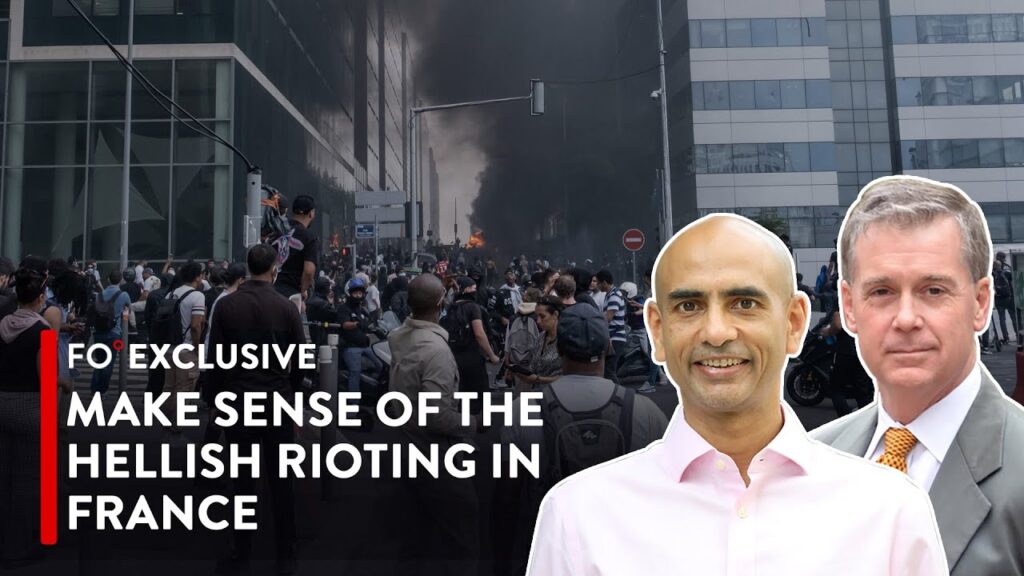When Muslim girls go back to state-run schools in France this week, they will not be allowed to wear the abaya, a traditional Arab dress that covers the shoulders, torso and limbs. The aim of the new policy, announced on August 27 by Education Minister Gabriel Attal, is to further enforce the country’s guiding principle of secularism, or laïcité. France has already banned headscarves in state schools since 2004, and religious symbols are banned in state schools and government buildings.
France has long prided itself on its laïcité, a principle that seeks to keep religion separate from public life. Critics, however, note that the headscarf and abaya bans risk marginalizing religious minorities. Laïcité, they argue, should be a curb on religious domination of the public sphere — not a curb on religious expression in public.
Political gridlock, social unrest: symptoms of a country in crisis
The abaya ban comes at a time of great turmoil in France. Since his reelection in April 2022, President Emmanuel Macron has been forced to deal with country-wide protests over the government’s decision in January 2023 to raise the country’s retirement age and coups in former French colonies such as Gabon and Niger that threaten to cut off France’s access to oil and other resources.
Anti-government sentiment also boiled over at the end of July in reaction to the police shooting of a 17-year-old Parisian of Moroccan and Algerian descent. Protests over the shooting led to $1 billion of damage and over 2,000 arrests, mostly in suburbs populated by Muslim citizens from former French colonies. This was not the first time Macron had to deal with an Islam-related incident. In response to the 2020 beheading of a teacher who showed caricatures of the Prophet Mohammed in class, Macron said: “Islam is a religion that is experiencing a crisis across the world.” This attitude has been echoed in the president’s remarks about the abaya ban. Authorities tasked with enforcing the new law will be “uncompromising,” he said, adding that teachers and school administrators will “not be left alone.”
Political pressure might also be a factor in the timing of the crackdown on Islamic symbols in schools. At the end of August, Macron met with leaders of France’s right-wing National Rally Party and the left-wing New Economic and Social People’s Union or NUPES coalition to try and break a stalemate in the National Assembly that is stalling the president’s legislative agenda. The abaya ban could be an attempt by the president to signal his capacity for change and concessions on right-leaning issues.
The decision has garnered support from right-wing conservatives, who typically remain distant from Macron’s liberal Renaissance party, but also from far-left socialist and communist parties, who have historically opposed the influence of religion, primarily Catholicism, in affairs of the state.
More moderate liberals are outraged by the abaya ban, arguing that an individual’s right to practice their religion freely is one of the bedrocks of a democratic society. Banning the abaya or other religious clothing sends a message that France is willing to compromise on individual freedom in the name of secularism and that certain cultural and religious practices are not welcome.
There are many Muslim women’s voices: Let’s listen to them
France is a nation known for its rich cultural diversity. Its strength lies in its ability to accommodate and celebrate diverse backgrounds. The Muslim community in France represents this diversity. Opinions on the headscarf and abaya vary, with some more secular Muslims adopting Western fashions. Other Muslim women choose to wear the headscarf and abaya as a matter of personal religious faith and identity. They consider them an important aspect of their relationship with Islam and a symbol of modesty and piety. Other Muslim women view religious clothing as a form of empowerment and a means to assert their identity in a society that frequently stigmatizes them. They argue that the ban on headscarves and abayas is an infringement on their right to practice their faith and cultural identity.
Opponents argue that religious clothing disrupts the educational process and promotes religious proselytism. They assert that it symbolizes the oppression of women and runs counter to the values of laïcité. French authorities have also expressed concerns that abayas and headscarves are barriers to assimilation into French society, potentially leading to social and cultural isolation.
Schools can provide a platform for students to learn about different cultures and religions, fostering an environment of mutual respect rather than exclusion. Education should remain at the forefront of this approach, as informed students are more likely to understand the importance of respecting diverse perspectives.
It is entirely possible for France to uphold the principle of secularism while respecting individual religious freedoms and cultural diversity. Rather than banning the abaya, the government should focus on educating and fostering tolerance among our students. The true strength of a secular society lies in its ability to embrace diversity, not stifle it. In doing so, the state can reaffirm the values of liberty, equality and fraternity that France holds dear.
[Anton Schauble edited this piece.]
The views expressed in this article are the author’s own and do not necessarily reflect Fair Observer’s editorial policy.
The post Is Banning Women’s Garments Really A French Value? appeared first on Fair Observer.
from World News - Independent, Nonprofit Media https://ift.tt/6NAv5UG https://ift.tt/CGvaJd6




0 Comments
Online Latest Bangla News, Article - Sports, Crime, Entertainment, Business, Politics, Education, Opinion, Lifestyle, Photo, Video, Travel, National, World.
Emoji